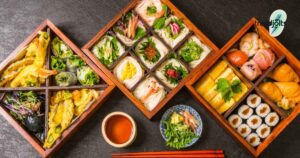You’re sitting in a Tokyo café, confidently ordering your favorite matcher latte while chatting with locals about your weekend plans. Sounds impossible? Think again! The secret lies in mastering the most common Japanese verbs—your golden ticket to Japanese fluency. These linguistic powerhouses make up 25% of all daily Japanese conversations, yet most learners ignore them completely.
Here’s the game-changer: just 100 essential Japanese verbs unlock thousands of everyday interactions. No more awkward silences or translation apps! Whether you’re navigating Japanese verb conjugation, understanding native speakers, or building confidence for real conversations, this guide transforms beginners into confident speakers. Ready to crack the code of basic Japanese verbs and start your Japanese language adventure?
Let’s move into the verbs that’ll revolutionize your learning journey!
Mastering the Most Common Japanese Verbs for Everyday Conversations
Building a strong foundation in the Japanese language starts with one crucial element: most common Japanese verbs. These linguistic building blocks don’t just help you communicate—they transform your ability to express complex thoughts naturally. Research shows that basic Japanese verbs make up over 25% of all words used in daily Japanese conversations. That’s massive!
Think about it this way: if you master just 100 essential Japanese verbs, you’ll understand a quarter of everything native speakers say. It’s like having a master key that unlocks doors to Japanese fluency. Whether you’re ordering ramen in Tokyo or chatting with colleagues, these verbs become your secret weapon for confident everyday interactions.
The beauty lies in their versatility—one verb can express dozens of nuanced meanings depending on context and conjugation patterns.
Understanding Japanese Verb Groups
Unlike English where verbs change based on subjects (think “I am” versus “he is”), Japanese verbs follow completely different rules. They stay consistent regardless of who’s speaking! Instead, Japanese verb conjugation depends on how the verb itself transforms. This system actually makes things simpler once you grasp the pattern.
Japanese verbs fall into three distinct categories, each with unique conjugation patterns. Understanding these verb groups isn’t just academic—it’s your roadmap to mastering verb conjugation efficiently. Once you recognize which group a verb belongs to, you’ll predict its conjugations instantly. It’s like having a cheat code for Japanese grammar!
U-Verbs (Godan verbs)
U-verbs (Godan verbs) are the workhorses of Japanese language. They end in -u sounds but here’s the twist: their stems change when conjugated. Think of them as shape-shifters that adapt to different situations.
Take 話す (hanasu) meaning “to speak.” Watch how it transforms: 話さない (hanasanai) for negative, 話した (hanashita) for past tense. The stem shifts from “hanas-” to “hanasa-” to “hanashi-.” Other common examples include 飲む (nomu) “to drink” and 書く (kaku) “to write.” These physical actions verbs dominate daily conversations, so mastering their patterns gives you incredible leverage in Japanese fluency.
Ru-Verbs (Ichidan verbs)
Ru-verbs (Ichidan verbs) are the rebels of Japanese verb conjugation—they keep their stems consistent! These verbs end in -ru and make conjugation patterns refreshingly predictable. No shape-shifting here.
Consider 食べる (taberu) meaning “to eat.” Its stem “tabe-” remains rock-solid: 食べない (tabenai) for negative, 食べた (tabeta) for past. Same goes for 見る (miru) “to see” and 寝る (neru) “to sleep.”
This consistency makes Ru-verbs perfect starting points for beginners. You’ll build confidence quickly because these essential Japanese verbs follow straightforward rules that don’t require memorizing multiple stem changes.
Irregular Verbs
Irregular verbs in Japanese language are refreshingly simple—there are only two! That’s right, just する (suru) meaning “to do” and 来る (kuru) meaning “to come.” These rebels refuse to follow standard conjugation patterns, but their uniqueness makes them memorable.
する (suru) becomes your Swiss Army knife for creating compound verbs. Add it to nouns and boom—instant verbs! 勉強する (benkyou suru) means “study,” 旅行する (ryokou suru) means “travel.”
Meanwhile, 来る (kuru) transforms dramatically: 来ない (konai) for negative, 来た (kita) for past. Master these two irregular verbs and you’ll handle countless daily conversations with confidence.
The Most Common Japanese Verbs You Should Learn First
Now comes the exciting part—diving into most common Japanese verbs that’ll supercharge your conversations! These aren’t random selections; they’re carefully chosen basic Japanese verbs that appear constantly in everyday interactions. By focusing on frequency, you’ll maximize your learning efficiency and start understanding native speakers faster.
Recommended Blog: Cultural Nuances to Understand When Learning Japanese
Smart learners prioritize high-impact vocabulary first. These essential Japanese verbs form the backbone of daily Japanese conversations, from ordering coffee to discussing weekend plans. Each category serves specific communication needs, so you’ll build practical skills while expanding your Japanese fluency.
Let’s explore these game-changing verbs that’ll transform your speaking confidence!
Essential Action Verbs (Physical Actions)
Physical actions dominate our daily experiences, making these essential Japanese verbs absolutely crucial. These verbs describe movements, activities, and tangible behaviors you’ll use constantly.
| English | Japanese (Romaji) | Kanji | Hiragana |
| To go | iku | 行く | いく |
| To come | kuru | 来る | くる |
| To eat | taberu | 食べる | たべる |
| To drink | nomu | 飲む | のむ |
| To see/watch | miru | 見る | みる |
| To listen | kiku | 聞く | きく |
| To walk | aruku | 歩く | あるく |
| To run | hashiru | 走る | はしる |
| To stand | tatsu | 立つ | たつ |
| To sit | suwaru | 座る | すわる |
Example sentences bring these verbs alive:
毎朝コーヒーを飲む (Maiasa kōhī o nomu) means “I drink coffee every morning.” Notice how 飲む (nomu) seamlessly fits into daily conversations? Another gem: 公園で歩くのが好き (Kōen de aruku no ga suki) translates to “I like walking in the park.”
These action verbs become second nature with practice, forming the foundation of your Japanese vocabulary.
Common Mental & Emotional Verbs
Mental verbs and emotional verbs unlock your inner thoughts and feelings in Japanese language. These sophisticated basic Japanese verbs let you express complex psychological states that make conversations meaningful and personal.
| English | Japanese (Romaji) | Kanji | Hiragana |
| To think | kangaeru | 考える | かんがえる |
| To know | shiru | 知る | しる |
| To believe | shinjiru | 信じる | しんじる |
| To remember | omou | 思う | おもう |
| To understand | wakaru | 分かる | わかる |
| To forget | wasureru | 忘れる | わすれる |
| To like | suki | 好き | すき |
| To hate | kirai | 嫌い | きらい |
| To hope | negau | 願う | ねがう |
Watch these verbs in action: 彼の名前を忘れた! (Kare no namae o wasureta!) exclaims “I forgot his name!” The past tense of 忘れる (wasureru) shows how Japanese verb conjugation works naturally. Here’s another: 日本語を話すのが楽しい (Nihongo o hanasu no ga tanoshii) means “Speaking Japanese language is fun.”
These emotional verbs help you connect authentically with native speakers during deeper conversations.
Important Daily Life Verbs
Daily life verbs handle your routine activities and practical needs. These essential Japanese verbs cover work, study, rest, and commerce—everything you need for functional everyday interactions in Japanese society.
| English | Japanese (Romaji) | Kanji | Hiragana |
| To work | hataraku | 働く | はたらく |
| To study | benkyou suru | 勉強する | べんきょうする |
| To wake up | okiru | 起きる | おきる |
| To sleep | neru | 寝る | ねる |
| To buy | kau | 買う | かう |
| To sell | uru | 売る | うる |
| To rest | yasumu | 休む | やすむ |
| To travel | ryokou suru | 旅行する | りょこうする |
Real-world usage makes these verbs stick: 毎日日本語を勉強する (Mainichi Nihongo o benkyou suru) declares “I study Japanese language every day.” Notice how 勉強する (benkyou suru) uses the irregular verb する?
Another practical example: 週末に買い物に行く (Shūmatsu ni kaimono ni iku) means “I go shopping on weekends.” These daily life verbs become automatic responses once you practice them in context, building your confidence for real-world Japanese conversations.
Mastering Japanese Verb Conjugation
Japanese verb conjugation might seem intimidating at first, but it follows logical patterns that become second nature with practice. Unlike English where we wrestle with irregular forms like “go-went-gone,” Japanese verbs follow predictable rules based on their verb groups.
Once you crack these conjugation patterns, you’ll transform basic vocabulary into sophisticated expressions.
The beauty of Japanese grammar lies in its consistency. Each verb type (U-verbs, Ru-verbs, irregular verbs) has specific transformation rules that work across thousands of verbs. Master these patterns and you’ll conjugate confidently without memorizing every single form. Think of conjugation patterns as your linguistic toolkit—once you understand the mechanics, you can build countless sentences with precision and Japanese fluency.
Polite vs. Casual Form
Polite form versus casual form represents one of Japanese language‘s most crucial social distinctions. This isn’t just grammar—it’s cultural navigation that determines how native speakers perceive your respect level and social awareness.
Casual form uses dictionary verbs directly: 話す (hanasu) means “to speak” in relaxed settings with friends or family.
But polite form adds the masu form ending: 話します (hanashimasu) shows respect in professional settings, with strangers, or formal situations.
Here’s the pattern: 食べる (taberu) becomes 食べます (tabemasu), 飲む (nomu) transforms into 飲みます (nomimasu).
The masu form signals courtesy and creates positive impressions during everyday interactions. Smart learners start with polite form because it works universally—you can always dial down formality, but starting too casual risks offense.
Negative Form
Negative form construction differs dramatically between casual and polite styles, but both follow consistent conjugation patterns within their verb groups. Understanding negation unlocks your ability to express what you don’t do, can’t do, or won’t do.
Casual negative for U-verbs (Godan verbs) changes the ending: 話す (hanasu) becomes 話さない (hanasanai) meaning “don’t speak.”
Ru-verbs (Ichidan verbs) simply drop -ru and add -nai: 食べる (taberu) transforms into 食べない (tabenai) for “don’t eat.”
Polite negative uses -masen: 話しません (hanashimasen) and 食べません (tabemasen).
Irregular verbs break rules: する (suru) becomes しない (shinai) or しません (shimasen), while 来る (kuru) turns into 来ない (konai) or 来ません (kimasen).
Practice these patterns with flashcards until they flow naturally in daily conversations.
Past Form
Past form conjugation separates beginners from intermediate speakers because it requires mastering multiple transformation rules. But here’s the secret: past form patterns repeat predictably across verb groups, making systematic learning possible.
Casual past for U-verbs depends on their ending sounds.
Verbs ending in -ku like 書く (kaku) become 書いた (kaita) meaning “wrote.”
Those ending in -mu or -nu like 飲む (nomu) transform into 飲んだ (nonda) for “drank.”
Ru-verbs simply replace -ru with -ta: 見る (miru) becomes 見た (mita) meaning “saw.”
Polite past adds -mashita: 書きました (kakimashita), 飲みました (nomimashita), 見ました (mimashita).
Irregular verbs create their own rules: する (suru) becomes した (shita) or しました (shimashita), 来る (kuru) transforms into 来た (kita) or 来ました (kimashita).
Master these patterns and you’ll narrate experiences confidently with native speakers.
Best Strategies for Learning Japanese Verbs
Learning most common Japanese verbs efficiently requires strategic approaches that maximize retention while minimizing frustration. Smart learners don’t just memorize—they create systems that make basic Japanese verbs stick permanently in long-term memory.
The key lies in combining multiple learning modalities that reinforce each other. Visual learners benefit from flashcards with kanji, hiragana, and romaji. Auditory learners need exposure to native speakers through anime, podcasts, and conversations.
Kinesthetic learners require hands-on practice through writing, speaking, and shadowing techniques. Don’t pick just one method—blend approaches that target different learning styles simultaneously. This multi-pronged strategy accelerates Japanese fluency while making the journey enjoyable rather than tedious. Remember: consistency beats intensity, so establish daily conversations practice routines that become automatic habits.
Final Thoughts: Take Your Japanese to the Next Level
You’ve just unlocked the secret to Japanese fluency! These most common Japanese verbs aren’t just vocabulary—they’re your passport to authentic everyday interactions. Start with basic Japanese verbs from each category and watch your confidence soar. Master verb conjugation patterns gradually, practice with native speakers, and celebrate small wins daily.
Your Japanese language journey becomes exciting when you focus on high-impact essential Japanese verbs first. Use flashcards, create sample sentences, and immerse yourself in real conversations. Remember: every native speaker started exactly where you are now. Keep practicing these daily conversations builders and you’ll be chatting naturally sooner than you think.










